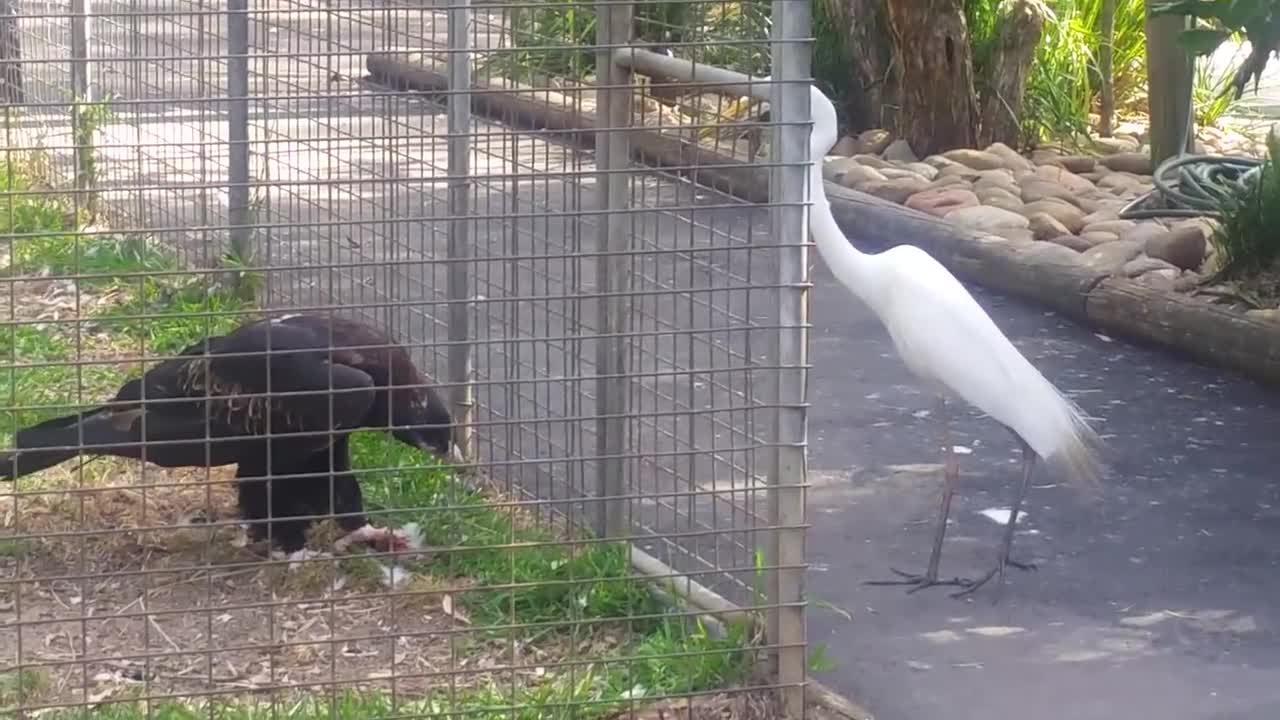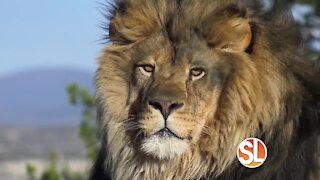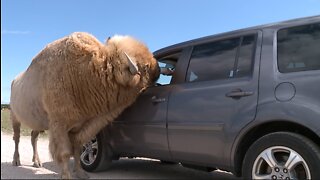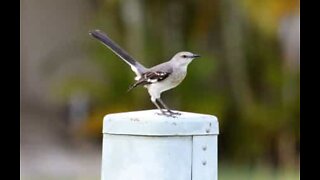Premium Only Content

Eagle attacks bird at Featherdale Wildlife Park,
Eagle attacks bird at Featherdale Wildlife Park, in Sydney Australia
Eagles are large, powerfully built birds of prey, with heavy heads and beaks. Even the smallest eagles, such as the booted eagle (Aquila pennata), which is comparable in size to a common buzzard (Buteo buteo) or red-tailed hawk (B. jamaicensis), have relatively longer and more evenly broad wings, and more direct, faster flight – despite the reduced size of aerodynamic feathers. Most eagles are larger than any other raptors apart from some vultures. The smallest species of eagle is the South Nicobar serpent eagle (Spilornis kloss). The largest species are discussed below. Like all birds of prey, eagles have very large, hooked beaks for ripping flesh from their prey, strong, muscular legs, and powerful talons. The beak is typically heavier than that of most other birds of prey. Eagles' eyes are extremely powerful. It is estimated that the martial eagle, whose eye is more than twice as long [clarification needed] as a human eye, has a visual acuity 3.0 to 3.6 times that of humans. This acuity enables eagles to spot potential prey from a very long distance. This keen eyesight is primarily attributed to their extremely large pupils which ensure minimal diffraction (scattering) of the incoming light. The female of all known species of eagles is larger than the male.
Eagles normally build their nests, called eyries, in tall trees or on high cliffs. Many species lay two eggs, but the older, larger chick frequently kills its younger sibling once it has hatched. The dominant chick tends to be a female, as they are bigger than the male. The parents take no action to stop the killing.
-
 0:19
0:19
Jojoann
4 years ago $0.01 earnedHawk attacks eagle
126 -
 4:17
4:17
Pozzy
4 years agoTwo Rivers wildlife park
143 -
 1:39
1:39
pearl7
4 years ago $0.01 earnedA small bird attacks my cat
63 -
 4:05
4:05
KNXV
4 years agoOut of Africa Wildlife Park: Baby Warthogs
33 -
 0:18
0:18
video
4 years agoThe eagle is a large bird
96 -
 3:56
3:56
KNXV
4 years agoOut of Africa Wildlife Park: Meet Totter the Otter!
5 -
 0:36
0:36
Buzzvideos - EN
4 years agoVicious bird chases and attacks cyclist
31 -
 2:11
2:11
KGTV
4 years agoBee swarm attacks South Park couple, dogs
56 -
 3:25
3:25
WEWS
5 years agoAfrican Safari Wildlife Park welcomes record crowds
91 -
 1:16
1:16
Buzzvideos - EN
4 years agoAngry bird attacks pedestrians as it defends nest
6